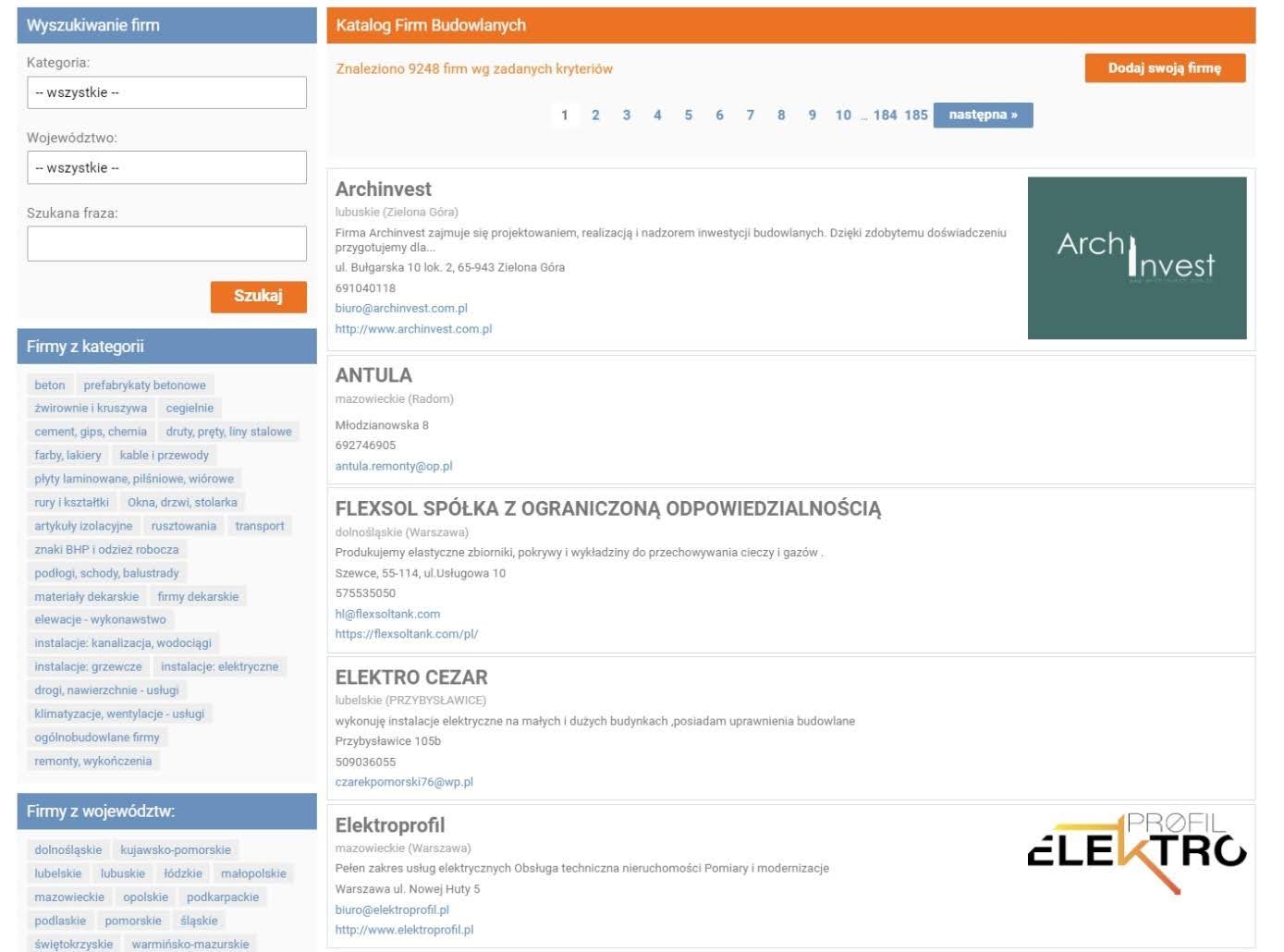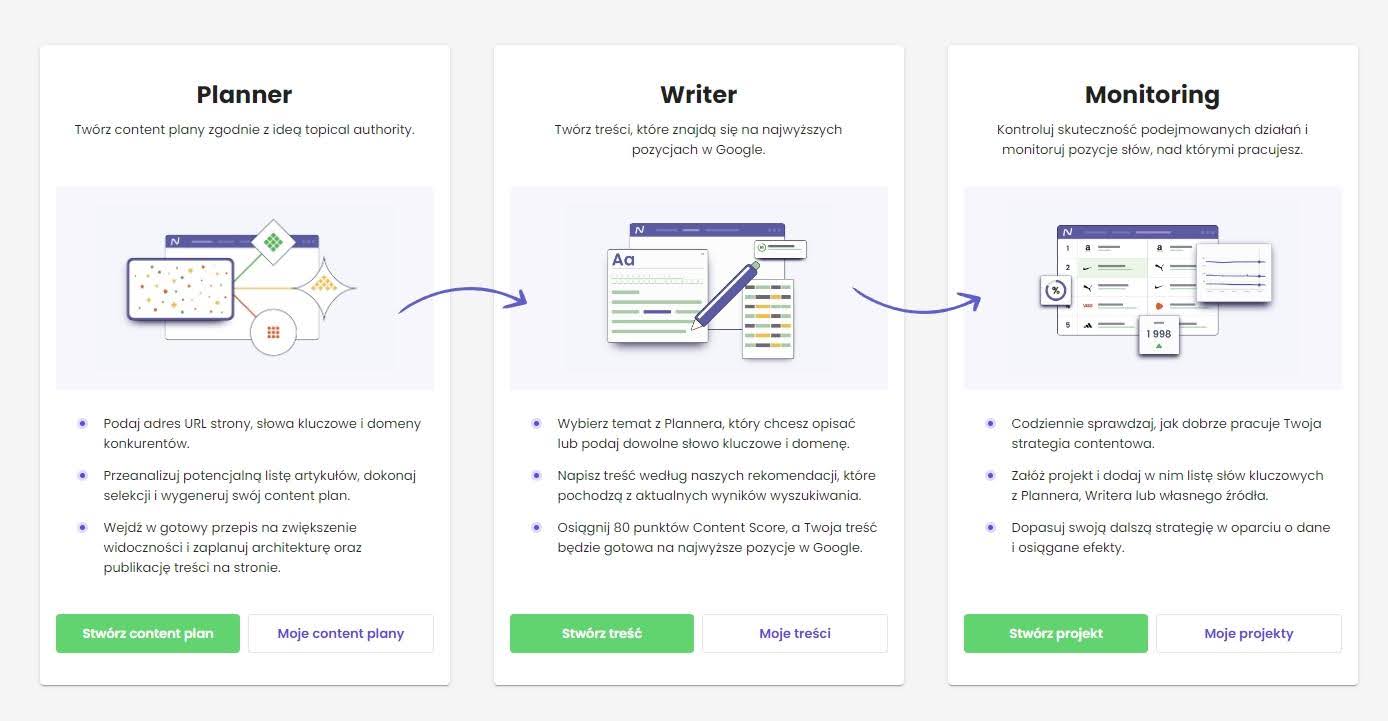Finding external links is the foundation of building visibility on the web.So how can SEO back-end help in this regard? What exactly should or should not it be? What practical methods should you use when creating one?.
We will discuss these issues in more detail in this article..
What is an SEO backend?
.
An SEO backend is a collection of websites and other online resources that are used to build a profile of links leading to the main site in order to improve its position in search results.
The backlink profile can consist of different types of sites, such as blogs, discussion forums, review sites or social media. It is important that it be diverse and contain quality links. .
It is worth adding, however, that there are types of backlinks that qualify as Black Hat SEO. They were popular especially in the past (roughly until 2015), when Google’s algorithm was not yet properly developed..
Black Hat SEOs were characterized by the following features:.
-
- Created solely with SEO in mind-These types of pages (referred to as “Presell Page” or “pretzel” for short in Polish) did not contain content particularly useful to the user. Their sole purpose was to increase the ranking of the target site.
- Application of Presell Texts – Presell Texts (as the name implies published on Presell Pages) are short (usually a maximum of 1,500 characters with spaces) low-quality entries whose sole purpose was to place links to the positioned page usually in exact match anchor text.
- Automated process – Pages, redirects and content used for this type of backend often benefited from some form of automation. Precl posts, for example, were often synonymized texts at the same time. Individual parts of sentences were written as a series of synonyms (e.g., positioning|SEO|optimization), and then thrown into a mixer to generate multiple “unique” texts. As you can guess, their quality from the user’s point of view was not high.
.
It’s worth remembering this point, as to this day the very term “SEO back-end” is somewhat controversial.In this article, however, we focus on the creation of high-quality link back-ends that use multiple organic methods for link acquisition. .
Is it worth creating a backend?
.
A quality SEO back-end is a key element in any website’s SEO strategy. Here are the main reasons:
-
- Increased credibility – a variety of link sources will make your site perceived by search engines as more credible and valuable.
- Protection against fluctuations due to updates – if a site uses only one link source, a single algorithm update that addresses just a particular technique/source/page category can shake up a site’s positions. A diverse link base will protect against such a situation.
.
- Increase traffic – links located on different sites and platforms will generate natural organic traffic.
- Increased Resistance to Negative SEO – A site with a diverse profile of quality links is more resistant to malicious actions in the form of an SEO attack. Such practices may involve just generating low-quality links to your site. However, if Google knows that your links are of high quality, it will be able to automatically recognize the attack and ignore the malicious redirects.
- Improve your site’s position in search results-the benefits discussed earlier will contribute to an overall improvement in your site’s visibility in the SERPs.
How to build an SEO backend
.
Let’s now discuss 6 ways that will allow you to build a diversified link backend in a practical way..
1. Acquire links from friends and friendly sites
.
This method involves getting links to your website from the sites of people and companies with whom you have a positive business or personal relationship..
Practical tips:.
-
- Build relationships – build and maintain good relationships with other sites, bloggers and businesses in your industry. Don’t treat every competitor as an enemy, but rather as potential partners.
.
-
- Offer something in return – offer something of value in exchange for a link, such as sharing your partner’s content on your social media.
.
-
- Don’t abuse your relationships – don’t keep asking the same people/companies for the opportunity to post links. You will harm the relationship in the long run this way.
.
-
- Be careful -don’t rely on this technique too extensively. Otherwise Google may interpret it as, for example, a link exchange system.
.
2. Social media
.
Use social media to share the content you publish on your site. While the links you acquire in this way don’t have as much power as redirects from reputable websites, they have many other benefits. One of them, for example, is building reach..
Practical tips:.
-
- Choose the best platform for your niche – building visibility on even one social media platform takes time. Therefore, focus specifically on those that are most relevant to your industry (e.g. LinkedIn for B2B).
- Use a variety of formats – use content formats such as posts, infographics and videos to attract diverse users.
- Encourage sharing – with your posts, encourage users to share your content to further increase reach and gain additional links.
.
- Interact with users – respond to comments, questions and shares, thereby building long-lasting relationships with your followers.
3. Get feedback and testimonials from your customers
.
The goal of this strategy is to collect positive statements from users of your products or services and convert them into backlinks. .
Practical tips:.
-
- Take advantage of your customers’ social media – if a customer is satisfied with your services, ask them to share the feedback on their social profile by linking to your site.
.
-
- Prepare case studies When you create a case study on a particular client, ask them to link to it on your website and social media profiles.
.
-
- Collaborate with clients in content creation – invite clients to contribute content, such as through interviews or guest articles on your site. Then, encourage them to share that content with their networks.
.
4. Links from industry directories
.
Links from industry directories are links to your website placed in specialized online directories that collect information about companies and services in a specific industry. These are important sources of backlinks that can increase your site’s credibility and are especially useful for local SEO..

.
Practical tips:.
-
- Choose the right directories – focus on industry directories that are well-regarded and related to your field of business. It’s even better if such a collection is part of a larger thematic portal from a particular niche.
.
-
- Make sure your information is consistent – save all data about your business in one style of your choice. For example, determine whether you want to use the abbreviation “PHU” or the expansion “Commercial and Service Company.” Otherwise, you may give Google a little confusion, and the power of redirects will suffer.
.
- Regularly update your entries – if there are any changes to your company’s information, be sure to quickly update the information in industry directories.
- Have realistic expectations Links from directories do not have particularly high strength. This is mainly because of past spam updates. Nevertheless, it is worth taking care of such redirects.
5 Guest posting and sponsored articles
.
Another strategy is to publish high-quality articles on thematically related sites. Guest posting (guest posts) are texts usually posted free of charge, e.g. on industry sites that gather expert content. In contrast, a fee is always paid for sponsored articles..

.
Practical tips:.
-
- Care for quality – published content should be of high quality. Otherwise Google will interpret such posts as a cheap way to acquire links.
.
-
- Link to your site in a natural way – links do not always have to be in the author’s bio or at the end of the text. If possible, weave them in naturally and contextually, such as when you mention an offer.
.
-
- Use special tools – platforms such as WhitePress allow you to quickly find places to publish sponsored articles. In turn, with the module Content Suitein Senuto you will be able to plan and prepare quality articles.
.

6 Domain Capture
.
Domain capture (from domain sniping) involves identifying and acquiring valuable web domains that have expired or been abandoned by their previous owners. Such sites can often have already built up authority and history, which proves useful in creating an SEO backend to your main site..
Practical tips:.
-
- Monitor expiring domains – use tools to monitor domains that are close to expiration. Useful in this regard are GoDaddy Auctions, AfterMarket, Expired Domains.
.
-
- Do an evaluation – in evaluating a domain use the Visibility Analysis module in Senuto. It is also worth considering tools such as Ahrefs and Semrush.
.
-
- Use domains to create valuable content Publish quality content on acquired domains that is related to your main site. Weave in natural redirects to your positioned site. You can even turn the acquired domain into a separate company blog.
.
-
- Create redirects -create 301 redirects from the acquired domain to your site. However, do not abuse this technique and use it with caution.
.
-
- Remember the legal issues – ensure that by capturing the domain, you will not violate property rights, trademarks, etc.
.
Link spam update a SEO backend
.
Google updates such as Panda (2011) and Penguin (2012) have imposed restrictions on low-quality content and links, effectively ending the era of spammy SEO back-end building methods. .
In today’s reality, it is therefore necessary to focus on multiple methods of natural link acquisition, which often require creativity.It is also important to maintain a diversity of link sources and avoid techniques that manipulate search engine rankings. Only by doing so will your site’s backend produce long-term results..
Summary
.
These are the highlights discussed in the article:.
-
- SEOI backlinks are important in SEO, but you need to create them the right way.
- The main benefits of SEO backlinks are to increase traffic and the credibility of the site in the eyes of Google.
.
- Useful ways to build a back-end include partnering with friendly sites, social media, customer testimonials, industry directories, guest posts and sponsored articles, domain capture.Back-end
 Iza Sykut
Iza Sykut